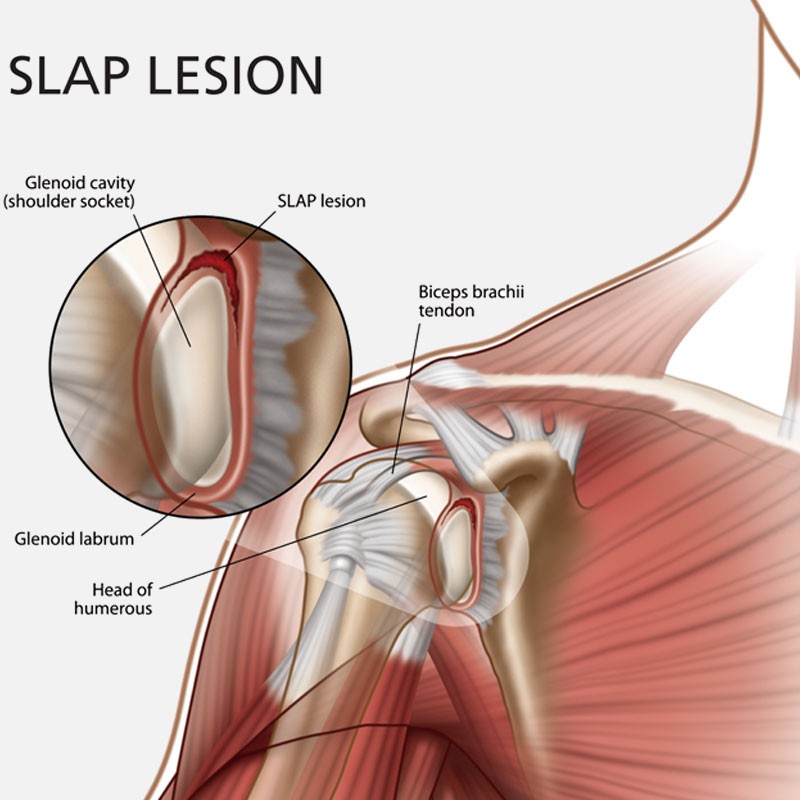
Do you have trouble with or ever feel like you have an unstable shoulder? Has your shoulder ever been dislocated, or in some situations, dislocated multiple times? Do you have pain with overhead motions in your shoulder? If so, you may have problems with your labrum. An unstable shoulder joint can be the cause or result of a tear in the labrum of your shoulder, also known as a SLAP tear. SLAP stands for Superior Labral tear Anterior to Posterior. In basic terms this means a tear in the top of the labrum from the front to the back. The labrum is the connective tissue, or cartilage, lining the socket end of your ball and socket shoulder joint. It provides extra support for the joint, helping to keep the head of the humerus (the ball portion of the ball and socket) in place. An injured or torn labrum can cause pain, trouble moving your arm, and/or your shoulder joint to feel unstable.
These tears can occur from a single traumatic event like falling on an outstretched arm, bracing oneself in a car accident, a forceful pull of the shoulder joint, or a dislocation. They can also occur from repetitive micro traumatic injuries often found in athletes performing repetitive overhead movements like throwing a baseball.
There are a number of different types of SLAP tears. Not all cause symptoms, and some (type 1 tears) are mostly degenerative and aren’t considered pathological by surgeons, therefore nothing to be concerned about. Some types of tears may be symptomatic and cause weakness but can be managed with physical therapy. Other more severe or involved tears may require surgical repair, which would then merit physical therapy for post-operative rehabilitation, and takes 9 to 12 months to completely heal.
What can you expect in your physical therapy sessions? Your physical therapist will likely perform hands-on manual techniques to restore range of motion, decrease pain, and improve strength and stability. You will also be given a prescribed therapeutic and corrective exercise program tailored to your specific needs to be performed during your sessions, as well as to be performed at home. Your exercise program could include a possible combination of strengthening exercises, range of motion exercises, corrective postural exercises, as well as shoulder joint and shoulder blade stability exercises. Education is also a very important part of your physical therapy experience. Your physical therapist should help you understand your injury, how and why to modify your activity if needed, and will safely and appropriately progress your program as needed for you to achieve your level of functional prior to your injury/surgery.


